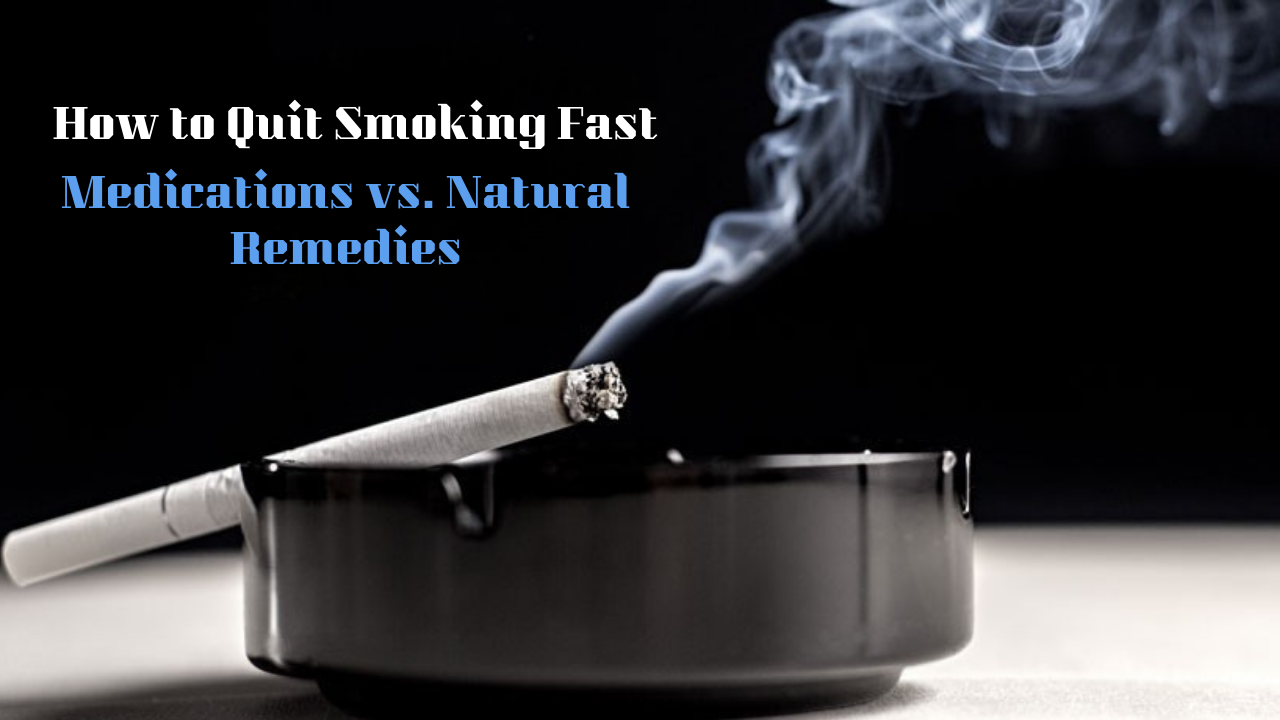The Increasing Significance of Natural Supplements in Cessation from Tobacco Use
As interest in holistic approaches to health continues to gain traction, more and more people who want to quit smoking are exploring using natural supplements and herbal remedies in their quitting process. Although pharmacological and nicotine replacement therapies remain the clinically most proven modalities, non-pharmacological medicines could substantively support the management of specific withdrawal symptoms in addition to addressing the local factors driving nicotine dependence.
In this very elaborate guide, we shall discover what the most promising natural supplements for quitting smoking will have to offer in the year 2025, assessing the scientific underpinnings, highlighted benefits, and critical considerations for each. The conclusion that would gather our views is based on recent research, clinical observations, and testimonials from quitters who have already incorporated these supplements into their quit plans.
Important: Supplements are not regulated by the FDA as prescription medications are. Always consult with a healthcare provider before starting any new supplement regimen, especially if you have existing health conditions or take other medications.
Understanding the Science Behind the Natural Approach
There are many mechanisms by which natural supplements may support cessation from smoking:
- Reducing nicotine cravings by affecting neurotransmitters involved in addiction pathways
- Some withdrawal symptoms are eased, such as anxiety, irritability, and insomnia, among others.
- Supporting the detoxification process of nicotine and other harmful chemicals found in tobacco
- Repair oxidative damage caused by long-term smoking habits
- Curing the underlying factors behind smoking, such as stress or mood disorders
- Research may be scanty about natural supplements that help quit smoking, as compared with drugs; quite a few anecdotal and research-supported lead supplements emerge.
Top Five Natural Supplements Against Smoking in 2025
1. St. John’s Wort: Hypericum perforatum
Like a natural antidepressant, St. John’s Wort has been used for ages; it, therefore, very likely helps improve mood disturbances accompanying nicotine withdrawal. Standardized extracts have shown improved consistency in concentrations of active compounds in 2025.
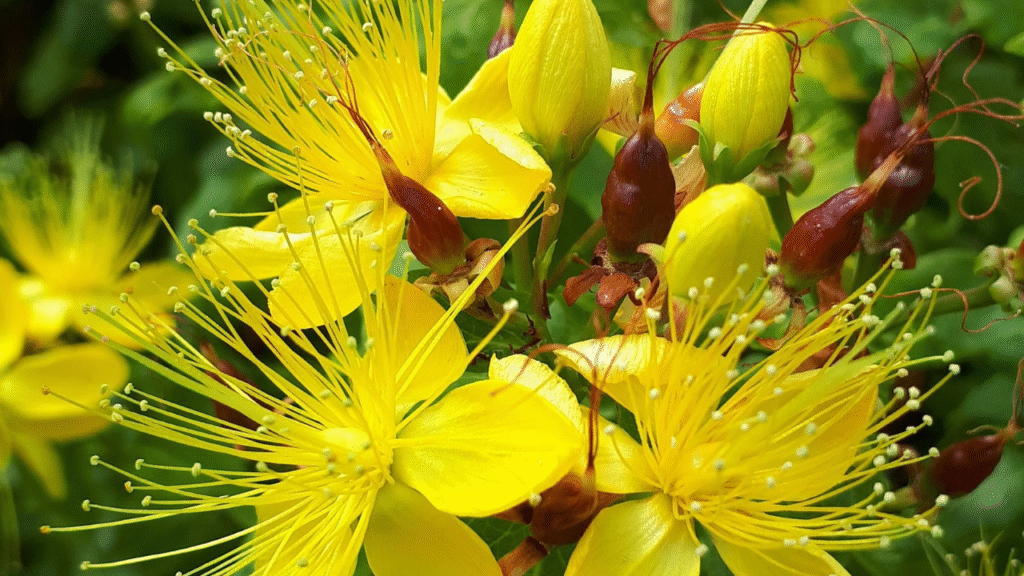
How It Works
Serotonin, dopamine, and norepinephrine are neurotransmitters targeted by St. John’s Wort: the same brain chemicals involved in nicotine addiction. This means that when one uses St. John’s Wort to modulate these neurotransmitters, it may help normalize his or her mood during the withdrawal state and reduce the psychological discomfort that usually brings the individual back to tobacco smoking.
Evidence
Smokers who used St. John’s Wort during withdrawal were found in a 2024 meta-analysis to suffer from less intense levels of depression and anxiety compared with those who received placebo treatment. Though not shown to directly lessen nicotine craving levels, its mood-stabilizing effects might inadvertently help in quit attempts.
The most commonly used dose is 300mg standardized three times daily for three weeks. Effects usually do not occur immediately, so expect 2-4 weeks for the full effect.
Warning: St. John’s Wort interacts with many medications, such as contraceptive pills, blood-thinning agents, antidepressants, and some medications for the heart. It must not be combined with prescription antidepressants or anxiety medications.
2. Lobelia (Lobelia inflata)
Called “Indian tobacco” at times, lobelia has an alkaloid called lobeline, which has a chemical action similar to nicotine and might help in reducing cravings. The 2025 preparations have improved extraction methods for better bioavailability.

Mechanism of Action-Theoretical
Lobeline may have some of the addictive potential of nicotine, as it binds to nicotine receptors in the brain, so that when the brain then craves nicotine, lobeline may fill in temporarily. Lobeline may potentially raise levels of dopamine, thus handling the reward path created havoc by nicotine withdrawal.
Evidence
Clinical research on lobelia as a smoking cessation agent shows conflicting results. A recently published randomized controlled trial in 2023 showed that participants who received lobelia extract displayed reduced craving levels compared to placebo; however, the effect was quite modest. Those who prefer traditional herbal remedies have used this for quitting tobacco for centuries.
Lobelia is consumed in tincture form (15-30 drops in water, 3 times daily), typically or as a standardized extract (200-400mg daily use). Most smoking cessation formulations combine lobelia with another herb for synergism.
Caution: Lobelia has a very high toxic level that includes possible nausea, vomiting, severe dizziness, and palpitations. It should only be used under strict supervision and should not be used by pregnant women or by patients or individuals having either heart conditions or high blood pressure.
3. Valeriana officinalis : Valerian Root
The applicator may act on the anxiety and the sleep problems usually associated with nicotine withdrawal because it is commonly known for its soothing effects. 2025 standardized extracts have made shelf life and stability much better.
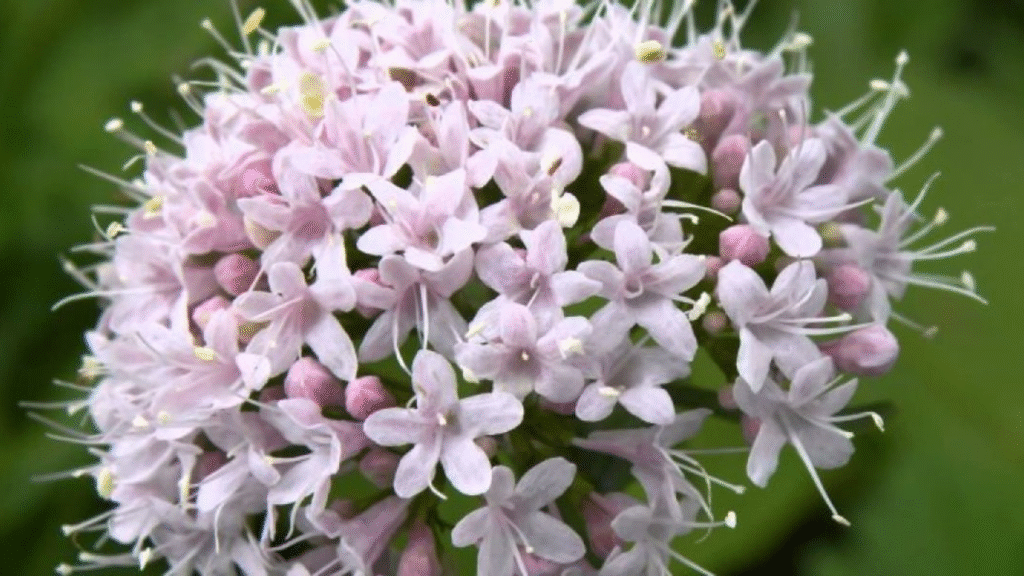
How It Works
The mechanism of valerian is to deliver substances to the area of GABA receptors in the brain. Accordingly, this produces a calming effect similar to anti-anxiety treatment but possesses lower chances of dependence. It may manage anxiety and improve sleep quality, which exceeds the boundaries of the withdrawal experience for smokers.
Evidence
Not particularly studied as a cessation agent, valerian has well-known properties in terms of anxiety and sleep. A 2024 study found that smokers who took valerian reported higher sleep quality and experienced lower daytime anxiety than did their counterparts who received a placebo.
Standardized extracts are taken in dosages ranging between 300 and 900mg 1-2 hours before bedtime for a sleeping aid or in smaller doses (200-300mg) during the day to help in managing anxiety. Effects are felt mostly in about 1-2 hours and are not habit-forming.
4. Black Pepper Extract (Piperine)
Black pepper extract, specifically the active compound piperine, is emerging as one promising compound for smoking quitting assistance. Innovations in absorption technology in formulations for 2025 include some improvements.
It Works On
Piperine activates the sensory nerve pathways very near those activated by nicotine, thus possibly substituting the oral and sensory part of smoking addiction. It also increases the bioavailability of other compounds, thus making it possibly useful as an adjunct to comprehensive supplementation regimens.
Evidence
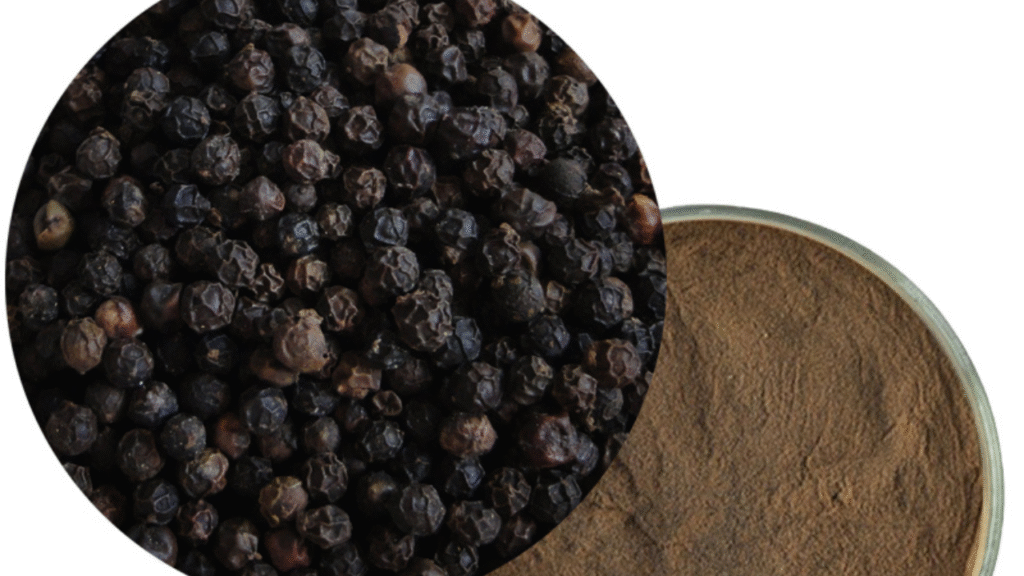
A pioneering study in 2024 found that black pepper essential oil inhalation reduced urges to smoke among smokers experiencing craving episodes. Thus, the sensory stimulation may partly satiate the craving for cigarettes without exposing the individual to their harmful effects.
Usually, people avail of black pepper extract in supplement form (piperine, 5-15mg daily) or in essence, inhaled when one’s craving is struck. Some people say they experience immediate relief from craving when inhaled.
5. Rhodiola (Rhodiola rosea)
Rhodiola is an adaptogen herb used to resist various stressors. Recently, it attracted attention as something that may be effective in quitting smoking. As of the year 2025, the extraction was improved for higher potency.
How It Works
Normalizes cortisol levels and dopaminergic- and serotonergic activity in the healthy population. Stress reduction and mood improvement will work for some psychological factors, more difficult obstacles to quitting, and the relapse triggers.
Evidence
Research on smoking cessation appears sparse for Rhodiola in particular, but it does not detract from the case for the relaxing agent. A pilot study in 2025 noted that smokers taking rhodiola at cessation reported lower perceived stress compared to placebo and marginally greater quit rates by 4 weeks.
Typical dosages average from 200 to 600 mg daily of a standardized extract (with 3% rosavins and 1% salidroside). Effects are normally noticeable within 1-2 weeks of use.
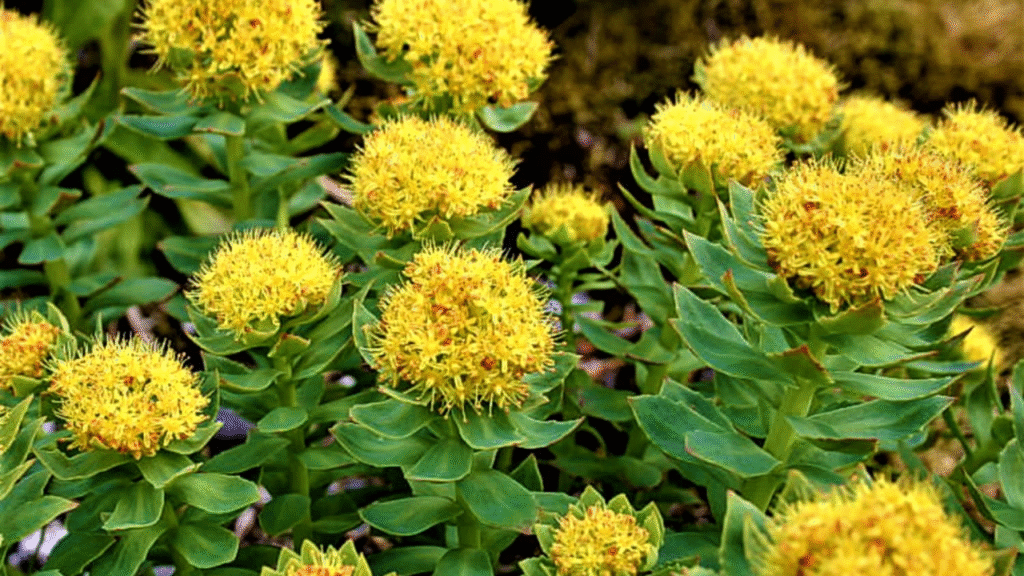
6. N-Acetylcysteine (NAC)
Technically, an amino acid derivative and not an herb, NAC has a large potential in treating other addictions, including nicotine dependence. The 2025 sustained-release formulations will allow steadier blood levels.
Mechanism of Action
NAC works to stabilize glutamate levels in the brain, which may become dysregulated with chronic nicotine use. It also scavenges oxidative damage from smoking and supports the detoxification abilities of the body.
Evidence
A 2023 double-blind trial showed that smokers taking NAC (1200mg twice daily) reported significantly reduced cravings and higher rates of 30-day abstinence compared to saline. NAC may have the potential for other types of addiction as well, suggesting a global reward pathway effect.
Dosage typically recommended for smoking cessation is 600-1200mg twice per day. Overall, NAC is well tolerated. Adverse reactions, in rare cases, tend to be mild gastrointestinal disturbances.
Effective Herbal Combinations for Smoking Cessation
Herbalists and naturopathic doctors use a variety of herb combinations, administered in synergy. Here are combinations considered promising in evidence for different types of nicotine withdrawal symptoms:
For Craving Reduction
- Lobelia + Black Pepper Extract + Licorice Root
- NAC + Rhodiola + Green Tea Extract
Anxiety and Stress Management
- Valerian + Passionflower + L-Theanine
- Ashwagandha + Rhodiola + Lemon Balm
Mood Support
- St. John’s Wort + SAMe + B-Complex Vitamins
- Rhodiola + Saffron Extract + Vitamin D
Sleep Improvement
- Valerian + Melatonin + Magnesium
- Passionflower + California Poppy + Hops
High-quality formulas exist today for smoking cessation that combine these substances in carefully measured proportions, making it that much easier to address several withdrawal symptoms in one product.
Comparing the Effectiveness of Natural Supplements
| Supplement | Evidence Level | Best For | Onset of Action | Key Considerations |
|---|---|---|---|---|
| St. John’s Wort | Moderate | Depression and mood disturbances during withdrawal | 2-4 weeks | Many drug interactions; not for use with antidepressants |
| Lobelia | Limited | Acute nicotine cravings | 15-30 minutes | Potentially toxic in high doses; use with caution |
| Valerian Root | Moderate | Anxiety and sleep disturbances | 1-2 hours | May cause drowsiness; avoid when driving |
| Black Pepper Extract | Emerging | Sensory aspects of smoking addiction | Immediate (inhalation) | May enhance absorption of other supplements |
| Rhodiola | Limited | Stress management and fatigue | 1-2 weeks | May cause stimulation; take earlier in the day |
| NAC | Strong | Craving reduction and detoxification | 2-4 weeks | May cause gastrointestinal discomfort |
Natural Supplements and Their Integration into Your Quit Plan
These natural supplements are best applied in combination with quitting smoking approaches. Here are the strategies emphasizing their effectiveness:
1. Consult with Healthcare Providers

Before beginning any supplementation regimen, consult a healthcare provider knowledgeable about natural approaches, such as:
- Naturopathic doctors
- Physicians of integrative medicine
- Clinical training for herbalists
- Pharmacists trained in natural medicine
This becomes much more critical when dealing with the underlying diseases of a patient or medications already taken by the patient. Many natural products may interact adversely with conventional medications.
2. Choose Quality Products
The success of natural supplements purely depends on their quality. Seek out products that:
- They are standardized to specific amounts of active compounds
- Tested for purity and potency via third-party laboratories
- Manufactured in reputable establishments with GMP certification
- Clearly indicate its sourced and extracted methods
The quality improvement in standards for supplements has greatly improved in 2025; a lot of products now use QR codes linking them to comprehensive certificates of analysis.
3. Combine with Behavioral Strategies
Natural supplements work best when used with evidence-based behavioral approaches to quitting, including:
- Cognitive-behavioral therapy techniques
- Mindfulness meditation and breathing exercises
- Regular physical activity
- Stress management practices
- Social support networks
Most current digital smoking-cessation apps offer specific modules dealing with how to intertwine natural approaches with behavioral ones for more holistic recovery.
4. Exercise Patience and Constancy
Unlike the nicotine replacement products, these natural supplements can take time to bring maximum advantages. To set more realistic expectations, however, give the supplement time to work: normally, 2 to 4 weeks of use.
5. Monitor Your Response.
Keep a Journal Recording your Symptoms, Craving Patterns with Inevitable Improvement in Well Being from Natural Supplements. This can help you identify the most effective supplements for your withdrawal patterns and adjust your regimen accordingly.
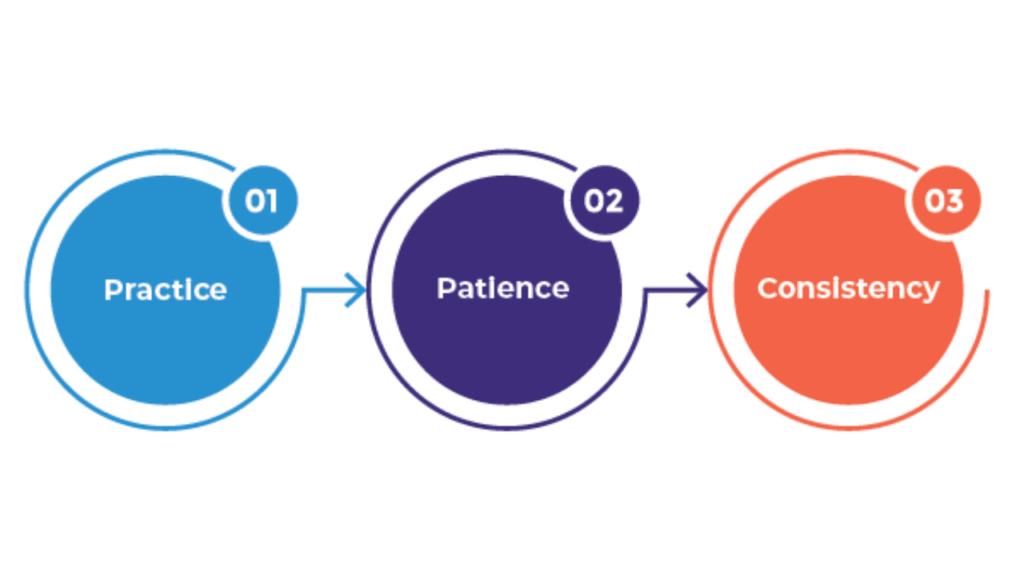
The Future of Natural Approaches to Smoking Cessation
Research into smoking cessation via natural means and natural supplements is continually evolving. Many promising developments are on the way, including:
- Personalized herbal formulations: Based on subjective experiences of withdrawal and genetic profiling
- Advanced delivery systems, Such as liposomal encapsulation for enhanced absorption and targeted release
- Combination products: Those that target multiple areas of withdrawal all at once
- Digital integration: With apps to guide users on optimal timing and dosage of supplements, matching real-time craving patterns
As research continues to substantiate the traditional herbal wisdom with modern scientific means, more evidence-based natural options can be expected to come up in the coming years.
Conclusion: Find Your Natural Path to Freedom from Smoking
Natural supplements can be a valuable addition to traditional smoking cessation methods, especially for those seeking a more natural route or who have little success with standard options. They may not offer the same prophylactic effect as prescription medications or nicotine replacement therapies for every patient, but they may soothe withdrawal symptoms and target psychosocial variables sustaining the smoking behavior.
The successful implementation of herbal medicine, on the individual level, is almost always very personal, regarding an individual’s withdrawal pattern, health history, and personal preferences. Education, allied to suitable herbal products sourced from informed entities, paves the way in one’s conquest against tobacco.
FAQs:
What is the fastest way to quit smoking?
The fastest way varies—medications, nicotine replacement, or natural remedies. Combining strategies with lifestyle changes often works best.
Are natural remedies effective for quitting smoking?
Yes, natural remedies like herbal teas, mindfulness, and exercise help reduce cravings and support long-term smoking cessation success.
Do medications really help in quitting smoking faster?
Yes, medications like bupropion or varenicline reduce withdrawal symptoms and cravings, making quitting smoking faster and more manageable.
Can I combine medications with natural remedies to quit smoking?
Absolutely. Many people combine medications with mindfulness, healthy eating, or exercise to maximize success in quitting smoking.
How long does it take to quit smoking using these methods?
Time varies—some quit within weeks using medications, while natural remedies may take longer but encourage sustainable results.
Hi, I’m veda, a professional health content writer and passionate wellness advocate at HealthTipsIndia.com
. With years of experience in writing evidence-based, reader-friendly articles, I specialize in creating content that empowers people to live healthier, more balanced lives. Whether it’s nutrition, fitness, natural remedies, or preventive healthcare, I translate complex medical concepts into actionable tips tailored for the Indian lifestyle. My goal? To make trustworthy health information accessible to everyone—one article at a time.

